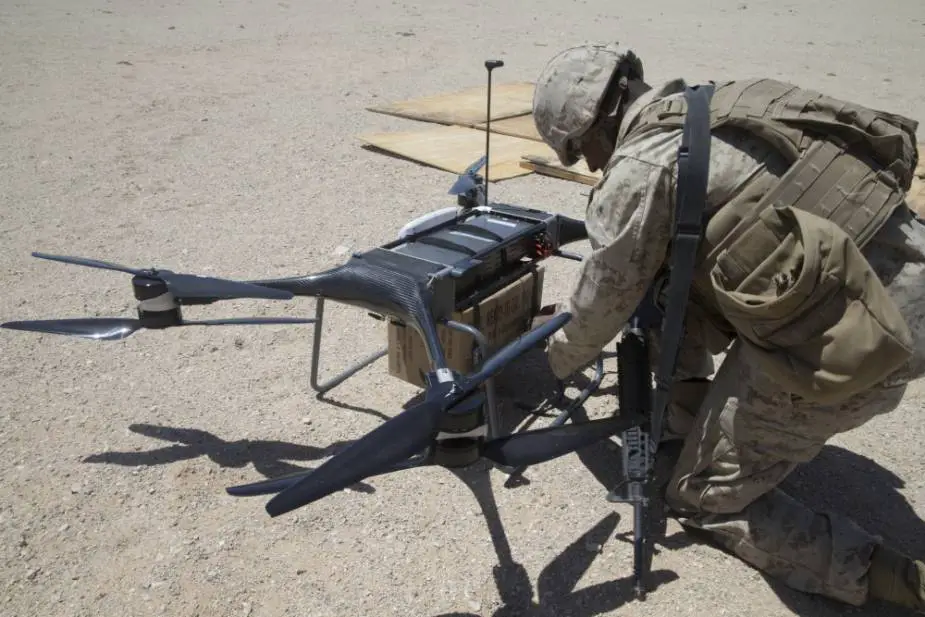Breaking news
French army wants UAVs to detect and intercept battlefield radio communications.
This call for projects issued on November 13 by the French Defense Innovation Agency (AID, agence de l’innovation de défense) for the benefit of the armed forces concerns the request for an electronic support payload that can be integrated into drones with a maximum take-off mass (MTOW) of less than 25 kg. This payload must be able to detect, locate, identify or even interact with or block telecommunication transmitters. This call for projects aims to contract one to several research and development projects of interest to the Ministry of Defense for a maximum duration of 7 months each (demonstration included).
Follow Army Recognition on Google News at this link

The U.S. TRV-50 quadcopters are used for unmanned logistics aerial delivery operations. The drone to be selected for the French army will have to be supplied by a European Union operator (Picture source: U.S. Marine Corps/Lance Cpl. Scott Jenkins)
In the field of drones, an emerging need is to have an electronic support payload allowing to:
• be deployed from a drone (MTOW <25kg);
• be programmed and reoriented during the mission (during the flight);
• have reduced size, mass, energy and cost (SWaP-C1) constraints and in particular:
- a size compatible with a carriage on a fixed or rotary wing drone;
- a maximum mass of less than 5 kg;
- an energy consumption of less than 50W;
• detect, locate and track one or more types of telecommunication transmitters in the {30 MHz – 6,000 MHz} band;
• simultaneously identify the transmitters detected (regardless of the technical solution chosen, including by interaction with the terminal);
• to map the transmitters of interest in an area, whether urban2 or rural3 (management of the density of emissions, absence of saturation, masking and multi-path);
• to have the information collected at the level of the drone implementation ground station in real time.
The autonomy of the payload may depend on its mode of operation, the various associated consumption balances will be specified.
The proposed solutions must be the subject of a demonstration aimed at objectifying the level of coverage achieved on all of the requirements detailed above. These demonstrations will be organized by the candidates for the duration of the 7 months of the project. The administration reserves the right to rule out the proposal if its feasibility is not proven, in particular if state resources are sought.
The industrialized solutions resulting from these projects could equip drones of the armed forces.
The Defense Innovation Agency only accepts proposals from all types of economic operators in the European Union: academics, small or medium-sized enterprises, mid-size companies, large groups. It accepts any grouping of these different types of operators.




























